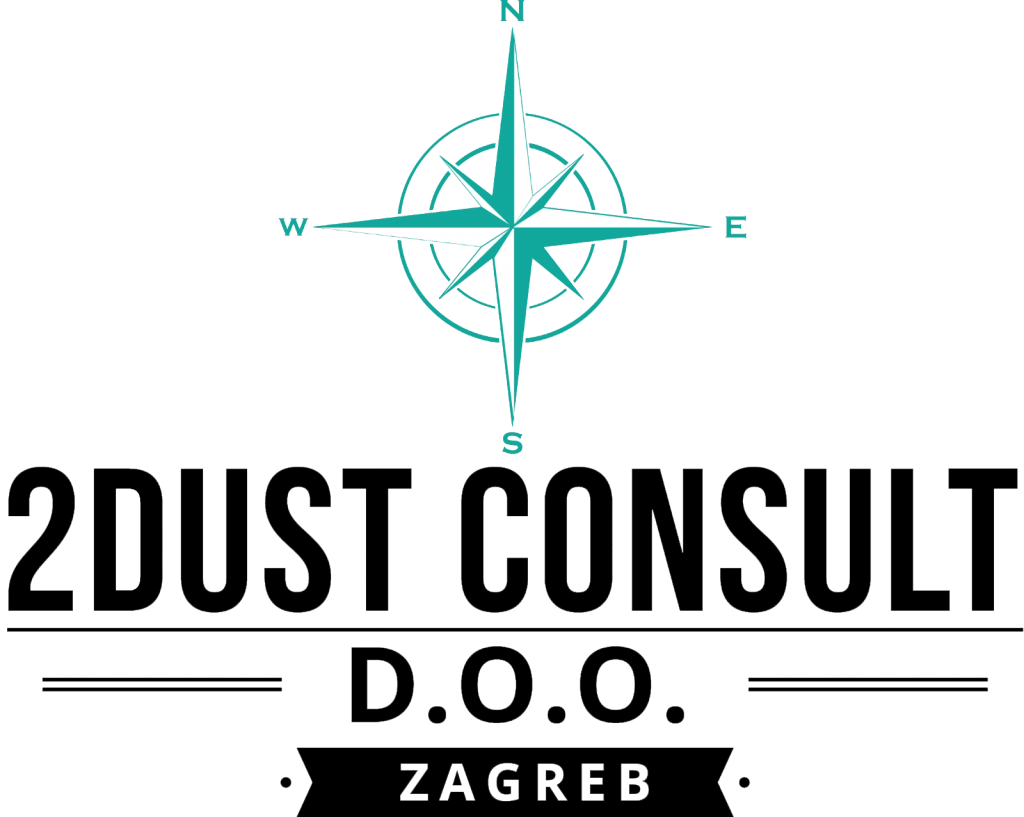There are no guarantees in business. At some point you may discover that your small or large company is having difficulties in business, that it is struggling to "make ends meet" or is overloaded with debts, or has large receivables, ... do not ignore the warning signs because a successful restructuring of the business can result in an increase in profits , operational efficiency and debt repayment.
If you want to stay in business and increase the results of your company, order the services of 2DUST CONSULT and 2D Management
Our consulting is based on a deep understanding of the essence of business in various industries, and the specific challenges that our clients face. Working closely together, we are able to identify client needs, develop strategies and set clear processes that will lead to the goal.
- Management
- Creating a business plan
- Creation of managerial reports
- Reorganization of the business and organizational structure of the company
- Optimization of business processes
- Change management
- Creating a marketing plan
- Creation and implementation of the reporting system
- Development and implementation of work procedures
- Creation and implementation of work instructions
- Workplace analysis
- Systematization of jobs
- Risk management
- Customer relationship management
- Business consulting, maintenance and engagement
- Commercial activity monitoring and management service and reporting
- Service operations director
Business consulting is the process of providing expert advice, analysis and recommendations to organizations in order to improve their operations, solve problems, optimize processes and achieve goals. Business advisors provide an outside perspective, expertise and experience to support clients in making informed decisions and achieving success. Here are a few ways business consulting can help an organization:
1. Strategic Planning: Business consultants can help create a strategic plan for an organization, identifying the key goals, strategies and action plans needed to achieve success.
2. Optimization of business processes: Consultants can analyze existing business processes, identify weaknesses, identify opportunities for improvement and recommend new strategies or technologies to increase efficiency and productivity.
3. Financial management: Business consultants can help analyze financial statements, identify key financial indicators, and provide guidance to improve an organization's financial performance.
4. Marketing and Sales: Consultants can provide marketing and sales expertise, helping the organization identify target markets, develop marketing strategies, optimize sales channels, and enhance the brand.
5. Human Resource Management: Business consultants can advise an organization on human resource management, including recruitment, talent development, performance appraisal, change management and employee motivation.
6. Technological transformation: Consultants can help organizations implement new technologies, such as digitization, automation or implementation of information systems, in order to improve their business and competitiveness.
7. Crisis management: In case of crises or challenges, business consultants can provide support in crisis management, providing professional advice, helping in restructuring and finding new strategies for recovery.
8. Business consulting is adapted to the specific needs and goals of the organization and can be provided through individual consultations
A customer relationship management strategy based on the integration of technology, processes and human resources to create, maintain and improve long-term and profitable customer relationships. CRM also refers to software solutions used to support and automate activities related to customer relationship management.
The key goal of CRM is to improve the customer experience, increase their loyalty and long-term value to the organization. Here are some key aspects of CRM and how they can be used:
1. Centralization of customer data: A CRM system allows an organization to store all relevant customer data in one place. This includes contact information, communication history, transactions, preferences and other relevant information. Centralized data enables better understanding and personalization of communication with clients.
2. Sales process management: The CRM system enables tracking sales activities, tracking sales opportunities, managing the sales cycle and tracking sales results. This makes it easier for the sales team to track sales opportunities, manage the sales pipeline and identify opportunities to improve sales performance.
3. Management of marketing activities: A CRM system allows an organization to monitor marketing campaigns, segment customers based on demographic or behavioral characteristics, personalize marketing messages and analyze the effectiveness of marketing activities. This helps the organization to better target and engage customers and optimize marketing strategies.
4. Customer Support Management: A CRM system allows tracking of customer support requests, support case management, response time tracking and customer satisfaction analysis. This helps the organization provide efficient and personalized customer support, improve response times and identify patterns and issues in customer support.
5. Analytics and reporting: A CRM system allows an organization to generate various reports and analyze data on customers, sales, marketing activities and customer support.
Digital marketing refers to the application of marketing strategies and techniques through digital channels to reach target audiences, promote products or services, increase brand awareness and achieve business growth. Digital marketing encompasses various activities carried out via the Internet and digital media. Here are some key elements of digital marketing:
1. Website: A key element of digital marketing is a well-designed, user-friendly website. A website is the foundation for displaying information about products or services, creating content, providing customer support and generating sales.
2. SEO (Search Engine Optimization): SEO is the process of optimizing websites to increase their visibility on search engines like Google. The goal is to achieve high positions in the search results of relevant keywords. This increases organic traffic to the website and improves brand presence.
3. PPC advertising (Pay-Per-Click): PPC advertising involves paying to display ads on platforms such as Google Ads, Facebook Ads or LinkedIn Ads. Advertisers only pay when a user clicks on their ad. This enables targeted advertising and results tracking.
4. Social Networks: Social networks like Facebook, Instagram, Twitter, LinkedIn and YouTube provide platforms for communicating with target audiences, promoting products/services and building brands. Social networks also allow tracking of results and engagement with the audience.
5. Email Marketing: Email marketing involves sending personalized emails to target audiences. This may include sending promotional offers, news, newsletters or automated messages based on user behavior. Email marketing can help maintain customer relationships and drive sales.
6. Content Marketing: Content marketing focuses on creating and sharing quality content (blogs, infographics, videos, etc.) that is relevant and useful to a target audience. The goal is to attract, educate and engage the audience and build trust and brand awareness.
7. Content Marketing: Content marketing focuses on creating and sharing quality content (blogs, infographics, videos, etc.) that is relevant and useful to a target audience. The goal is to attract, educate and engage the audience and build trust and brand awareness.
Internet advertising, also known as online advertising, encompasses the use of the Internet and digital channels to promote products, services, brands or organizations in order to reach a target audience. Internet advertising provides targeting, performance measurement and personalization capabilities that are often more difficult to achieve in traditional forms of advertising. Here are some key forms of internet advertising:
1. PPC advertising (Pay-Per-Click): PPC advertising allows advertisers to display ads on online platforms, and pay only when a user clicks on their ad. Google Ads is one of the most famous platforms for PPC advertising, but there are also other platforms such as Facebook Ads, LinkedIn Ads and Twitter Ads. Ads are displayed based on keyword relevance, target audience, interests or demographics.
2. Display advertising: Display advertising involves displaying visual ads on websites, apps or other digital media. Ads can be in the form of images, graphics, animations or videos. Ads can be targeted based on user interests, demographics or behaviour to achieve greater relevance.
3. Video advertising: Video advertising involves displaying ads in the form of videos on platforms such as YouTube, Facebook, Instagram or LinkedIn. Ads can be shown before, during or after video content. Video ads can be short commercials, tutorials, brand stories or other forms of content.
4. Sponsored Content: Sponsored content or native advertising involves integrating ads into organic content on websites, blogs, influencer profiles or social media. Ads are designed to fit naturally into the environment and provide value to users. Sponsored content is often used to build brand awareness or promote specific products/services.
5. Retargeting advertising: Retargeting advertising allows advertisers to show ads to users who have already visited their website or shown interest in a particular product or service. This form of advertising is used to re-engage users, drive conversions and reduce churn
Creating a budget is an important step in managing an organization's finances. Budgeting allows you to plan income and expenses and set financial goals for a certain period. Here are some steps you can follow when creating a budget:
1. Identify goals: Think about the organization's long-term and short-term goals. Define specific goals such as increasing revenue, reducing costs, or achieving a certain profit.
2. Collect data: Collect all relevant financial information, such as past financial statements, data on income, expenses, salaries, procurement and other relevant aspects of the business. Also, talk to relevant stakeholders to get the necessary information and perspectives.
3. Forecast revenues: Estimate expected revenues based on sales of products or services. Consider factors such as prices, volumes, seasonality and market trends.
4. Plan investments: If you plan to invest in new projects, equipment or other capital costs, include them in the budget. Consider the potential income and costs associated with these investments.
5. Set limits: Set limits for each element of the budget. This may include setting maximum costs or setting targets to reduce costs in certain areas.
6. Monitoring and reconciliation: The budget is not a static document. Regularly monitor the actual results against the budget and check whether the goals have been achieved. If variances occur, analyze them and consider budget adjustments to accommodate the changes.
7. Komunikacija i angažman: Uključite relevantne sudionike u izradu budžeta i osigurajte njihovo razumijevanje i podršku. Redovito komunicirajte.
Creating a strategic plan is a key step in directing the organization towards achieving long-term goals. A strategic plan is a document that identifies the vision, mission, values and goals of the organization and determines the path the organization will take to achieve these goals. Here are some steps you can follow when creating a strategic plan:
1. Environmental Analysis: Assess the external environment in which the organization operates. This includes analyzing the market, competition, trends, legislation and other factors that may affect the organization.
2. Assessment of internal resources: Review the organization's internal resources, such as human resources, financial resources, technology, reputation, and other internal factors that can affect success.
3. Defining the vision, mission and values: Define a clear vision of the organization, which represents the desired state in the future. Formulate a mission statement that describes the organization's purpose and how it will achieve its vision. Also, identify the values that the organization promotes and that will guide its actions.
4. Goal Setting: Define Specific, Measurable, Attainable, Relevant and Time-bound (SMART) goals that will help you achieve the organization's vision and mission. Objectives should be aligned with your environmental analysis and internal resources.
5. Identification of strategies: Develop strategies that will help you achieve your goals. Consider different approaches, such as growth, diversification, collaboration, innovation or optimization of business processes.
6. Planning action steps: Determine the specific steps and activities needed to implement the strategies. Arrange tasks, assign responsible persons and set deadlines for each step.
7. Monitoring and evaluation: Regularly monitor progress in the implementation of the strategic plan. Set up performance measures and monitoring mechanisms to see if goals are being achieved. If necessary, adjust the plan according to new knowledge and changes in the environment.
8. Communication and engagement: Ensure that the strategic plan is clearly communicated to all stakeholders in the organization.
Business controlling is the process of monitoring, analyzing and managing the performance of an organization to ensure the achievement of goals. The goal of controlling is to ensure that business activities are carried out in accordance with the set plans and standards and to identify and correct any deviations. Here are some key aspects of business controlling:
1. Setting goals and measuring performance: Controlling operations begins with setting clear and measurable goals for the organization, department or projects. Relevant performance indicators (KPIs) are then used to monitor achievements and compare against planned targets. This may include financial indicators (revenues, costs, profits), operational indicators (production, quality, delivery) and other relevant metrics.
2. Monitoring of results: Controlling includes regular monitoring of results and comparison with goals. This may include generating reports, analyzing financial data, comparing actual and planned values, and identifying deviations. Monitoring results enables problem identification, timely action and performance optimization.
3. Variance analysis: Controlling includes the analysis and interpretation of deviations between actual results and planned goals. Deviations can be positive (better than expected results) or negative (worse than expected results). Deviation analysis helps in identifying the causes of deviations and making adjustments to correct situations and improve future performance.
4. Risk management: Controlling operations includes the identification, assessment and management of risks that may affect the achievement of goals. This includes identifying potential threats, analyzing their likelihood and impact, and developing plans to reduce or manage risks.
5. Budget planning and monitoring: Controlling includes budget planning for the organization or department and monitoring of actual costs and revenues in relation to planned values. This enables identification of deviations in financial results, management of expenses
Financial and cost management are key elements of a successful business. Here are some steps you can follow to better manage your finances and expenses:
1. Financial data monitoring: Monitor your financial data regularly to have a clear view of income, expenses, profit and liquidity. Analyse financial statements, such as balance sheets, income statements, and cash flow statements, to identify trends and problems.
2. Budgeting: Create a detailed budget that includes income and expenses for a specific period. A budget will help you plan and manage your financial resources. Track actual results against budget and analyze variances to identify potential problems or opportunities for improvement.
3. Liquidity management: Keep an eye on your company's liquidity to ensure you have enough cash to meet your obligations. Manage receivables collection and control your payments to suppliers. Consider using short-term financial instruments, such as lines of credit or factoring, to improve liquidity.
4. Cost Control: Analyze your costs to identify areas where you can save or optimize. Review your operational costs, such as procurement, salaries, marketing, travel, etc. Identify unnecessary or high costs and consider measures to reduce them.
5. Negotiate with suppliers: Negotiate with suppliers to obtain more favorable procurement terms and possible discounts. Review your suppliers and consider opportunities to diversify or negotiate better terms.
6. Debt management: Keep an eye on your borrowing and monitor interest rates. If you have debt, consider refinancing or restructuring to lower your overall borrowing costs.
7. Investing and ROI: Consider investment strategies to maximize ROI. Analyze investment opportunities according to goals and risk and choose the most suitable instruments.






